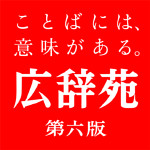The introduction to Tonio ANDRADE's How Taiwan Became Chinese mentions in passing that "in 1523 two rival daimyo ended up fighting each other in a Chinese harbor". Whoa, they did? Like... in person?
Nah, of course not. What did happen was called the "Níngbō disturbance" (寧波の乱), Níngbō being of course the Chinese harbor town in question, and it went down like this:
The Ming dynasty allowed Japan to send ships to certain of its ports, officially to bring tribute but with private trading allowed on the side. "Japan" in practice meant the Muromachi shōgunate, who were nominally in charge at the time. The shōgunate naturally sent skilled traders from harbor towns in the west, giving them half of a seal which was to be matched with the other half, held by China at the destination port.
Eventually, it came down to two great Japanese houses vying for the chance to trade with China: the Hosokawas (細川), from Sakai in Ōsaka, and the Ōuchis (大内) from Yamaguchi and Hakata.
In 1523, ŌUCHI Yoshioki (大内義興) sent out an official tribute mission of three ships, with KENDŌ Sōtetsu (謙道宗設) in charge. They had a seal dating from the Zhengde (正徳) Emperor's reign, which was apparently still usable even though the Jiajang (嘉靖) Emperor had ruled China since 1521. The Ōuchi ship arrived, showed its seal, and was welcomed as the "official Japanese delegation" in April.
A few days later, another "official Japanese delegation" arrived. This one had been sent by HOSOKAWA Takakuni (細川高国) with RANKŌ Zuisa (鸞岡端佐) in charge of its single ship. Its main disadvantage, apart from having showed up after the first official delegation, was that it only had an older seal from the Hongzhi (弘治) Emperor's reign -- which had ended with the Zhengde Emperor's accession to the throne almost two decades earlier. The seal was no longer valid.
However, the Hosokawa delegation had a secret weapon: master diplomat SŌ Sokei (宋素卿, Song Suqing), who had been born in Níngbō. His schmoozing and bribery got his delegation through customs first and generally treated much better by Níngbō officials than the Ōuchi suckers. (For example, the Hosokawa got official lodgings; the Ōuchi had to go sleep in a temple.)
You can no doubt imagine the throbbing forehead veins of the Ōuchi delegation at this point. Naturally, they lodged a formal complaint and waited for the appropriate authorities to resolve the matter opened up a multi-layered lacquer box set of whoop-ass, burning the Hosokawa ship to the waterline. Rankō Zuisa and many of his hundred-odd staff were killed.
But not Sō Sokei. He fled west towards Shàoxīng, pursued by enraged Ōuchi warrior-seamen carving a trail of arson and violence through the area. They didn't catch him, though; eventually they went back to the port, took a Chinese official hostage, and fled by ship. They turned up later in Shanghai and then on the Korean coast, where two of them were captured and sent back to the Ming dynasty. Sō, for his part, was sent to prison for aggravated troublemaking. He never got out.
Relations between China and Japan were tense for a while, as you might imagine. According to this page, arrangements were made to trade the Chinese official for Kendō Sōtetsu, who had been taken hostage; and even afterwards Japan continued to demand the return of Sō and the Hosokawa delegation's confiscated property.
After this, only the Ōuchi were allowed to send official Japanese delegations. A few decades later, even they got out of the tribute business, following the unfortunate death of ŌUCHI Yoshitaka (Yoshioki's son), who was forced to commit seppuku by his retainers after a string of diasters and unpopular decisions.
![[IMG]](http://no-sword.jp/images/2008/2008-01-30_o.jpg)
![[No-sword]](http://no-sword.jp/images/site/no-sword_banner.jpg)

![[img]](http://no-sword.jp/images/2008/2008-01-02_s.jpg)


